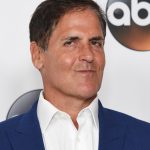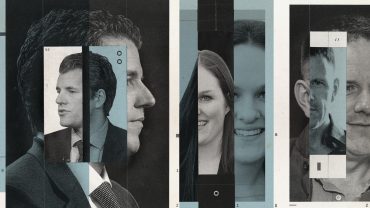

Only Six in the World: The Exceptional Case of Identical Twins Behind Billion-Dollar Tech Empires
Dmitry Gurski remembers the moment with absolute clarity. It was the spring of 2015, and Flo Health—an idea for a women’s health app existed only as a vague outline, a few hopeful notes scrawled on a whiteboard. He stepped into the room to find his identical twin, Yuri, already deep into a conversation with a prospective investor. No product. No pitch deck. No formal plan. And yet, Yuri was already selling it.
“He always goes first,” Dmitry says now. “And I follow—turning the spark into something structured, something that can scale.”
In most startups, a founding team split between impulse and precision would be seen as a risk. But for identical twins, the dynamic operates differently. When you share not only equity, but DNA, divergence can become an asset, sometimes even a strategy.
The Gurski brothers are part of a vanishingly small group: identical twins who not only build companies together but succeed by intentionally embracing their differences. Their story opens a window onto something rare in tech leadership: what happens when perfect genetic symmetry meets radical operational contrast?
Totally Opposite, Utterly Different, Identical Twins
After all, cases of eerily similar identical twins are easy to find. Take the story of the “Jim Twins”, identical twins who were separated at birth and reunited at the age of 39, who were found to have remarkably similar life experiences. Both bit their fingernails, drove the same type of car, smoked the same brand of cigarettes, and they even had the same job. The Jim Twins also exhibited some notable differences: one conveyed himself more clearly through speech, while the other was better suited to writing.
That’s because while identical twins share the same DNA and have the same genetic make-up, environmental influences and life experiences can create important differences. This makes personality a complex interplay between genes and environment, even for identical twins.
These twins share the same product, same meetings, same investors, and even the same Slack, and as a result, often appear as a single unit to the outside world. However, they operate from fundamentally different energies and personalities, and insist on being seen, respected, and remembered as individuals.
Tyler and Cameron Winklevoss
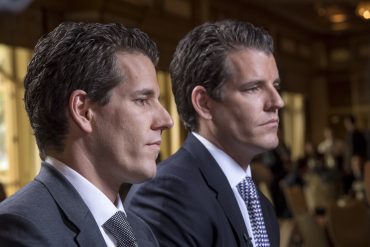
Famous for missing out on the Facebook fortune, Tyler and Cameron Winklevoss are identical to the untrained eye.
The 6-foot-5 identical twins hail from Southampton, New York, and were brought up in Greenwich, Connecticut. Their similarities, besides their looks, are endless: they both attended private school, both spent 12 years taking piano lessons, both enrolled at Harvard University to study economics, and both competed in the men’s pair rowing event at the 2008 Summer Olympics.
Yet the Winklevoss twins are inherently different. Not only are there subtle differences between the two (Cameron is left-handed, for example, and Tyler is five pounds heavier), but personality-wise, they are unique individuals. Tyler is often seen as more reserved and introspective, while Cameron is more outgoing and charismatic, frequently representing the public face of their ventures.
These ventures have led to huge successes for the Winklevoss twins, who have harnessed their individual personalities and operating styles to make a significant impact in the technology sector.
After becoming the first “Bitcoin billionaires” in 2013, the brothers went on to be among the most vocal proponents of digital currency. They launched the Gemini cryptocurrency exchange in 2016, where Tyler is the CEO and Cameron is the president, the latter taking a more hands-off approach to the business’s day-to-day operations.
The twins also co-founded Winklevoss Capital, an investment firm prioritizing seed funding and infrastructure for early-stage startups, predominantly those in the cryptocurrency and blockchain sectors. It appears the twins’ unique bond has influenced their investment portfolio, too; Gemini in 2019 bought the Nifty Gateway–an NFT platform co-founded by twins.
If the Winklevoss twins turned privilege and precision into crypto influence, Dmitry and Yuri Gurski followed a very different path — one that began not on the Charles River, but in the forests of Belarus.
Yuri and Dmitry Gurski
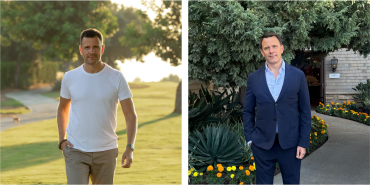
Dmitry and Yuri Gurski are twin brothers from Belarus who have worked together for almost 30 years. It all started in a Belarusian village where the brothers spent their summers collecting and selling mushrooms and berries. Later, they co-wrote articles and computer books and spent nearly five years working side by side in a publishing house focused on computer literature.
As teenagers, Dmitry and Yuri also worked together to develop health and fitness apps, which included a women’s health app called Only Women. While not a commercial success, this provided valuable experience for their future endeavors–most notably Flo Health.
Flo Health was launched by the brothers in 2015. Today, the women’s health app is used by more than 420 million people around the world to track their periods, ovulation, and pregnancy.
Flo Health is a clear example of the brothers’ shared vision of leveraging technology to empower individuals to manage their health. However, despite this shared vision, they are by no means a mirror-image operationally.
This complementarity has always helped us… And because our strengths are so different, we never really had conflicts.
Dmitry acts as the CEO of Flo Health, overseeing product development and company strategy. Thanks to his background in pharmaceutical chemistry, Dmitry’s leadership style focused on data-driven decision-making.
Yuri, as co-founder and president, focuses on business development and investment. He has previously co-founded multiple ventures that were later acquired by the likes of Google and Facebook, which has developed his leadership style into one focused on innovation and strategic partnerships.
Their complementary skill sets have been instrumental in Flo’s growth, according to Dmitry.
“That’s because we’re very different in our strengths,” he told TECH ICONS. “As our first boss once said: ‘Yuri is the one who cuts a path through the forest, and Dmitry is the one who turns it into a proper road’. Yuri is naturally better at starting things — launching new ideas, making the first move. I, on the other hand, am better at taking that foundation and building it into a working system or a real company.
“This complementarity has always helped us. Our responsibilities were always clearly divided. And because our strengths are so different, we never really had conflicts. Each of us focused on what we do best — and respected the other’s space.”
Like the Gurski, Oliver and Alexander Kent-Braham channeled their twinship into a mission-driven business but instead of health, their focus became equity in access to insurance. And instead of coming from tech publishing, they came from the tennis court.
Oliver and Alexander Kent Braham
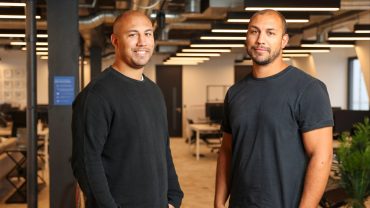
From childhood, the Kent-Braham twins have been destined for big things. At age 12, Oliver and Alexander had created a business selling golf balls they had retrieved from the lake. Their love of sports also saw the brothers play tennis for Great Britain at under-16 level, earning them a scholarship to the prestigious Reed School in Surrey, England.
The twins ultimately abandoned their dreams of becoming professional sportspeople after developing an interest in technology. They both worked at Yoti, a company that provides digital identity and age verification services, before co-founding their own startup–now one of the fastest-growing insurance companies in Europe.
After learning that non-UK nationals were having to pay considerable sums to obtain motor insurance coverage, they built Marshmallow to cater to the needs of marginalized customers and those who usually struggle to find affordable insurance.
Oliver has a financial background (he previously worked in finance at Investec) and now leverages this analytical focus to growth and efficiency within the company. Alexander, who previously worked as product director at Yoti and as an analyst at Quality Capital Management, brings a different set of skills to Marshmallow, utilizing his background to expand the company’s reach.
These differing skill sets contribute to a balanced and ultimately successful leadership dynamic, and has seen Marshmallow enjoy significant success. The company’s valuation has exceeded the $1 billion mark and is widely recognized as one of the UK’s fastest-growing startups.
While the Kent-Brahams built from the ground up, Justine and Olivia Moore entered the startup world from the other side not as founders first, but as the people writing the first checks.
Justine and Olivia Moore
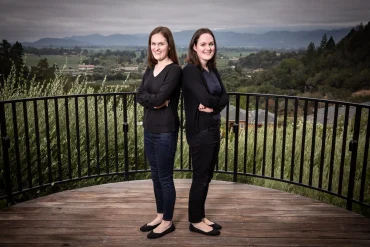
Often referred to as “the Venture Twins”, Justine and Olivia Moore are identical twin sisters who have carved out prominent roles in the venture capital landscape.
Not only are they indistinguishable, but the twins share an unmatched bond: a TechCrunch profile revealed that they live together in an apartment in Menlo Park, share clothes, and even share a space heater because their desks are just inches apart.
The sisters’ roles are as close as their keyboards and mice: Justine and Olivia are partners on the consumer investing team at leading Silicon Valley venture capital firm Andreessen Horowitz (a16z). Together, they co-manage investments in early-stage consumer startups, particularly those focusing on AI and emerging technologies.
The sisters were perhaps destined for a career in venture capital: their mother, Darcy Moore, was also a VC, though both Justine and Olivia studied journalism at Stanford. They were also destined to work together; while at university, they launched Cardinal Ventures, a first-of-its-kind on-campus startup incubator.
While Justine and Olivia share an unmatched bond and an unusually close working relationship, they exhibit distinct personalities and approaches within their VC careers.
Justine is often recognized for her analytical and strategic mindset. A focus on data-driven decision-making and a deep understanding of market dynamics characterizes her approach to venture investing. This analytical perspective allows her to assess startups with a critical eye, evaluating potential risks and opportunities meticulously.
On the other hand, Olivia has a visionary outlook and identifies emerging trends and consumer behaviors, which helps spot startups with disruptive potential. She is known for her dynamic speaking engagements, whereas Justine shares her insights on venture capital through written content and discussion.
Their combined efforts have led to successful investments in companies like ElevenLabs, Krea, and Viggle AI, reflecting their ability to merge strategic analysis with visionary insight.
Another pair of sisters, Anna and Kerry Wang, didn’t just analyze founders — they became them. Their story reflects what happens when resumes look identical, but minds and methods don’t.
Anna and Kerry Wang

”Don’t start a company with your twin sister,” is the worst advice Anna Wang has ever received, she told Forbes, so she ignored it and went on to co-found AI hiring company Searchlight with her identical twin, Kerry Wang.
The idea for the company came from the twins’ perceived likeness. Anna and Kerry found that despite their individual achievements (Anna graduated from Stanford with a BS in Computer Science and an MS in Artificial Intelligence, for one, while Kerry earned a BA with distinction in Human Biology), they ended up with identical resumes. Not only did they study at the same school, but their early careers also included stints at prominent firms like Google and McKinsey & Company.
“Recruiters went so far as to call Anna and I ‘the same person’ because we had similar names on our resumes,” Kerry said in an interview. “But the achievements and skills we gained at each were different, and traditional hiring processes miss that nuance in strengths and working style.”
This couldn’t be truer for Anna and Kerry. While they share similar educational backgrounds and early career experiences, they have distinct roles and areas of expertise that set them apart.
Anna, for example, is the technical brain of the operation. She served as co-founder and CTO of Searchlight before it was sold to Metaverse in 2024. She now leads the development of AI and machine learning models at the company, overseeing the engineering and design teams.
Kerry, on the other hand, served as CEO of Searchlight and is currently Director of Product at Multiverse. Unlike Anna, who takes a hands-on approach to technical problem-solving, Kerry focuses on developing the company’s strategic direction and vision and building customer relationships and partnerships.
While Kerry and Anna Wang share a strong academic background and entrepreneurial spirit, their distinct roles and experiences—Kerry’s focus on strategy and Anna’s on technology—enabled them to build Searchlight with a balanced and complementary approach.
If the Wang sisters represent a new generation of AI-native founders, Ali and Hadi Partovi are a reminder of an earlier era where personal computing was still magic, and building meant wiring code from scratch.
Ali and Hadi Partovi
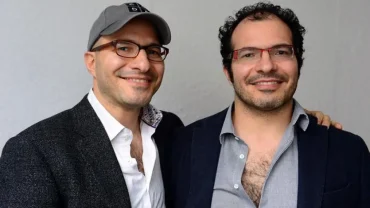
This was a decision inspired by their childhood. As young boys, Ali and Hadi programmed their own video games on a Commodore 64 brought home by their father, who had co-founded Sharif University, the top tech university in the Middle East.
After graduating from Harvard, both brothers went on their own professional endeavours. Hadi co-founded Tellme Networks, a company specializing in telephone-based applications, particularly voice-driven services. Ali went on to create the internet advertising pioneer LinkExchange.
I thought Ali’s first girlfriend was a horrible fit …So I broke up with her, pretending to be Ali. Twice.
While the brothers went on to create their own companies, Microsoft bought both: it acquired Tellme Networks for a reported $800 million and LinkExchange for $265 million.
From 2001 to 2018, the Partovi brothers worked together as angel investors, focusing on early-stage technology startups. Their investments included notable companies like Facebook, Dropbox, Airbnb, and Uber.
In 2013, returning to their shared childhood joy of coding, the twins co-founded Code.org, a non-profit dedicated to expanding participation in computer science by making it available in more schools.
Hadi, known for his outspoken advocacy in computer science education in schools, serves as CEO of Code.org, while Ali takes a more reserved ‘strategic contributor’ role. Fueled by his focus on mentoring and venture funding, he leverages his network in the tech industry to secure initial funding and support for the platform, helping to establish partnerships with major technology companies and influential figures.
In 2017, Ali founded Neo, a venture firm and accelerator to identify and mentor top engineering talent. Hadi serves as an active advisor to Neo, continuing to make angel investments and supporting the firm’s mission.
While they share the same mission (along with matching VW Beetles that are replicas of the “shagadelic” Austin Powers Bug), the Patrovi brothers differ when it comes to their career goals, public presence, and entrepreneurial paths, yet continue to work in tandem. They also have very different tastes in women, Hadi revealed in a recent Reddit AMA.
“I thought Ali’s first girlfriend was a horrible fit, and was pissed that he stopped spending time with his guy friends (i.e. me),” he said. “So I broke up with her, pretending to be Ali. Twice.”
A Distinct Advantage
What connects these founders isn’t just genetics. They share a childhood, yes—and in some cases, a digital life: one inbox, one Slack workspace, one calendar. But what makes them exceptional as co-founders isn’t what’s shared. It’s what’s distinct.
One is the strategist, the other the builder. One listens before speaking; the other speaks to think. She’s methodical and measured. I’m instinctive, occasionally reckless. We read different books, laugh at different jokes, fall in love with entirely different kinds of people. And yet, from all that difference, a rhythm emerges. Not discord—but structure. Not duplication but architecture.
To be an identical twin is not to be a replica. It’s not a Xerox. It’s not the second scoop on the ice cream cone. It’s something subtler—and more powerful: a kind of mutual presence. A form of trust built not on sameness, but on recognition.
In an industry that still lionizes the myth of the solo visionary—the loudest voice, the lone genius—their presence offers a quieter proposition: that influence can come from dissonance made coherent. That friction, properly held, becomes force.
They may look the same. But they are not the same.
They are, in every way that matters, completely different—yet unmistakably identical.
And maybe that’s not a contradiction.
Maybe that’s the blueprint.





